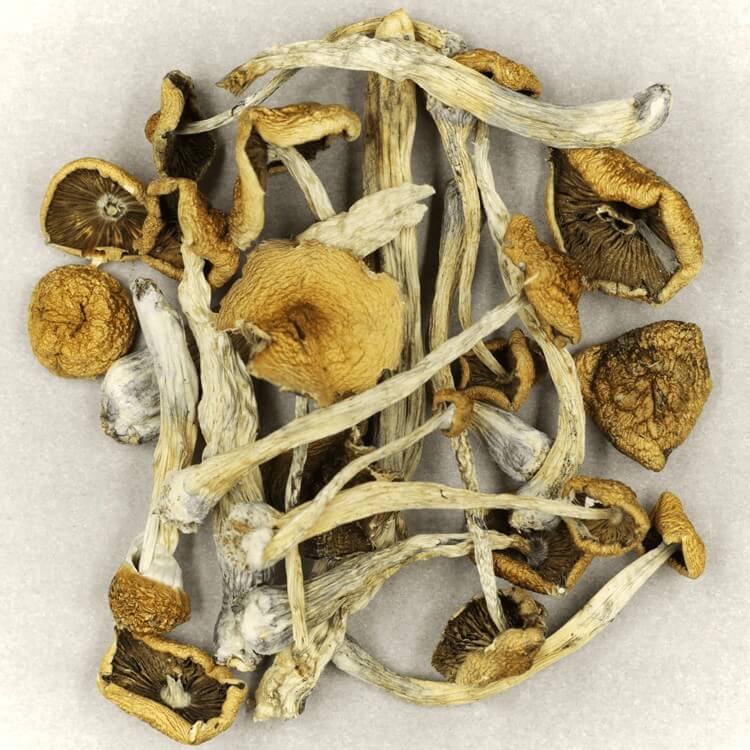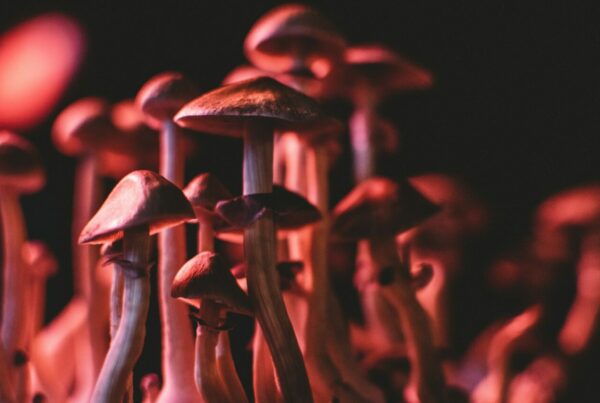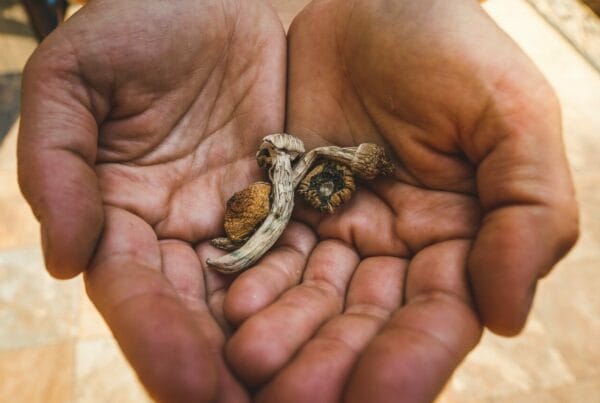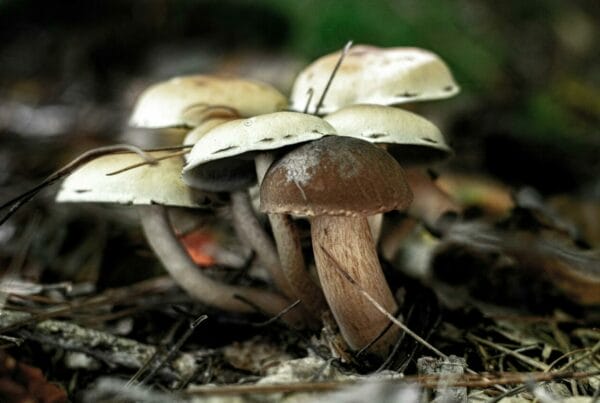Once viewed as purely fantastical, the strength of Psilocybe mexicana is now recognized due to advancements in psilocybin studies. The scientific community focusing on psychedelics is continually unveiling its healing properties, gradually leading to its acceptance in the healthcare sector. Experts view this burgeoning field with optimism, working tirelessly to determine safe dosages for medicinal purposes.
Key Takeaways
- Researchers employ advanced techniques such as liquid chromatography paired with tandem mass spectrometry to gauge the potency of mushrooms.
- Psilocybe Mexicana, along with other mushroom variants, is currently being studied in clinical trials to evaluate its potential therapeutic applications.
- The genetic diversity in magic mushrooms is vital for creating a precise dosage guideline.
Psychedelic Mushrooms: Journey from Mystery to Scientific Breakthroughs
In the past, only a few conditions were known to benefit from Psilocybe Cubensis. Nowadays, psilocybin is making considerable progress in revealing its concealed medicinal values.
Specialists are exploiting the potential of Psilocybe Mexicana and other potent strains for comprehensive research and clinical trials. Regardless of whether the subjects are in vivo or in vitro, this strain is effective in showcasing the genuine effects and benefits of the fungus species.
Psychedelics Venturing into the Market
Once concealed, now exposed—continuous progress and discoveries are increasingly attracting public attention, especially those seeking therapeutic remedies. Traditional mental health treatments often don’t meet expectations, leading individuals to search for more dependable alternatives.
Enter the magic mushrooms.
Individuals struggling with mental health disorders are turning to psilocybin, which has demonstrated potential in treating depression, alcohol addiction, anxiety, compulsions, tics, chronic pain, and more.
Currently, medical professionals are investigating creative methods to accurately determine the best dosage for safe patient administration. Notably, a research team from the University of Texas has developed a model to extract psilocybin and psilocin concentrations.
Establishing the potency of magic mushrooms in a clinical setting is achievable.
The Distinct Attributes of Mexicana
Golden Teachers, Blue Meanies, and B-Plus are among the species of magic mushrooms that have undergone extensive research. For a more comprehensive understanding of the safe use of these mushrooms, it’s crucial to delve into the study of other species as well.
The Mexicana species has emerged as a favored subject for research, not only due to its antiquity but also because its relatively low potency is likely to meet the standards of medicinal drugs.
Although the Mexicana strain is less potent than some other species, it can produce effects similar to those of more widely recognized strains. Therefore, as microdosing gains popularity among patients, this strain increasingly becomes a preferred option.
This strain demonstrates consistent levels of psilocybin and psilocin, akin to other strains. The rationale to choose this over other similar strains lies in its historical and anthropological significance.
Delving Into The Rich History Of The “Mexican” Mushroom
In antiquity, psilocybe mexicana naturally sprouted among moss. These psilocybin mushrooms were venerated by the indigenous people for their wide range of applications, often associated with mystical or otherworldly occurrences.
Let’s focus on the Mexican mushrooms. The first documented usage of these mushrooms can be traced back over 2000 years, by the indigenous people of North and Central America. The Aztecs, an ancient civilization, deemed these mushrooms as the “food of the Gods,” or “teonanácatl” in their language.
Were the Aztecs still among us today, they would vouch for the transformative, emotionally profound, and mentally stabilizing effects of the Mexicana, even without the knowledge of these modern terminologies.
Despite the multitude of cultivation methods, this mushroom has succeeded in preserving its natural psilocybin concentrations, underscoring its authenticity. This authenticity is a standard that is highly regarded by researchers and institutions dedicated to psychedelic studies.
Innovative Techniques for Psilocybin Content and Potency Testing
A consortium of ten researchers from the University of Texas at Arlington and other institutions have devised a novel method to test the potency of psychoactive compounds in mushrooms. This cutting-edge measurement system amalgamates liquid chromatography and tandem mass spectrometry.
Here are two of these groundbreaking methods:
- Liquid chromatography is a technique used to separate and analyze chemical mixtures. In this context, it’s utilized for isolating active chemicals in mushrooms. The procedure involves running a liquid sample through a column filled with a solid material, known as the stationary phase. The various chemicals in the sample interact with the stationary and mobile phases in distinct ways, leading them to separate at different speeds as they travel through the column.
- Spectrometry predominantly involves the study of how matter interacts with electromagnetic radiation across a spectrum of wavelengths. It identifies and quantifies substances based on the specific wavelengths of light that molecules absorb and scatter. This allows the determination of the electronic, vibrational, and rotational states of a particular chemical.
This methodology was employed on five varieties of magic mushrooms. The scientists found that the average total levels of psilocybin and psilocin in these strains ranged from 0.879 to 1.36. These concentrations exceeded those in many other strains such as Bull Run and Cambodian. The accuracy of their study was corroborated by comparing their findings with those from other autonomous laboratories.
The congruity of results between the two laboratories further validated the precision of their testing procedure in accurately determining the potency of the mushrooms.
If confirmed by specialists, this could lead to the introduction of new techniques to the existing array of psychedelic strength testing methods, acting as an added safety precaution to avoid incorrect dosage determinations.
Expanding Research to Additional Species
Broadening research to encompass other species can prove advantageous. It can deepen our comprehension of the health benefits linked with different strains and provide foundational data on the effects of less potent mushrooms.
Furthermore, it can assist in informing individuals about the effects of different dosages on the psychedelic experience. By contrasting Mexicans with more potent strains like Psilocybe Cubensis, researchers can ascertain how variations in concentrations of active compounds can affect therapeutic outcomes.
For example, the Blue Meanies strain induces more potent hallucinogenic effects, which could potentially be useful in treating conditions like depression. On the other hand, less potent strains are more suitable for microdosing or subtle uses such as mood enhancement or focus improvement.
Variations in Genetics Contribute to Safer Treatments
The fact that different cultivars or varieties exhibit unique genetic profiles and differ in potency, chemical composition, and effects. This diversity allows healthcare professionals to select the most suitable type for specific medical purposes and adjust doses according to individual needs, ultimately reducing risks and maximizing benefits.
Take, for instance, Psilocybe Semilanceata (Liberty Caps) or Psilocybe cyanescens. These possess unique alkaloid profiles that may be effective in treating anxiety. On the other hand, other synthetically grown mushrooms may be more appropriate for addressing substance abuse or compulsive behaviors. This diversity enables the formulation of personalized treatments with enhanced safety and efficacy.
From this, we can infer that the genetic diversity in hallucinogenic mushrooms, together with advanced methods of potency assessment and identification, is key to developing safer medical treatments.
Enhanced Safety in Medical Application
Let’s pause for a moment to appreciate the potential benefits of safer dosing.
- Decreased risk of overdosing: With accurate dosing, users can be assured of not overdosing. This also suggests that product labels should be made more straightforward to avoid consumer misunderstanding.
- Improved predictability: Individuals can expect the effects or experiences they might encounter during their trips with more precise dosing. This can alleviate overwhelming sensations and anxiety, thereby enhancing patient satisfaction.
- Standardized measurement: Dosing accuracy can facilitate a standardized metric, which allows people to easily refer to charts for potential effects.
Experience the Advantages of Accurately-dosed Shrooms through Advanced Potency Tests | Buy Magic Mushrooms Online at Buy Mushrooms Online Canada
If these two cutting-edge techniques continue to be applied, you’ll no longer have to deal with unpredictable effects. Pair this with smart online shopping at Buy Mushrooms Online Canada. We offer dried mushrooms that provide a serene, relaxing psychedelic experience without excessive psychoactivity. Buy psychedelics online in Canada at Buy Mushrooms Online Canada.
Frequently Asked Questions
Is Mexico Psilocybe Mexicana similar to the Big Are Big Mexicans and Psilocybe Cubensis the same?
No, Big Mexicans and Psilocybe Cubensis are different strains of mushrooms, so it’s crucial not to confuse them. Big Mexicans have a higher compound isolation, ranging from 0.5% to 1%, making them significantly more potent.
Psilocybe Azurescens is more potent than Psilocybe Cubensis. Their appearances are also distinct: Psilocybe Azurescens often has a bell-shaped cap, while Psilocybe Cubensis tends to have a conical one.
What is the highest concentration of psilocybin and psilocin in Mexican mushrooms?
The concentrations of psilocybin and psilocin in Mexican mushrooms can peak at 0.25%. Even though these levels are relatively low, equivalent to those found in the Golden Teacher strain, they can still induce potent psychedelic experiences that may have potential health benefits.
What is the recommended safe medicinal dosage?
Usually, a dosage between 1 and 2 grams is recommended. However, the dosage can fluctuate based on various factors such as methods of consumption, individual metabolic rates, and the unique potency of the mushroom strain. Some individuals opt for sub-threshold doses ranging from 0.05 (50mg) to 0.025 grams (250mg) to mitigate the psychedelic effects.





